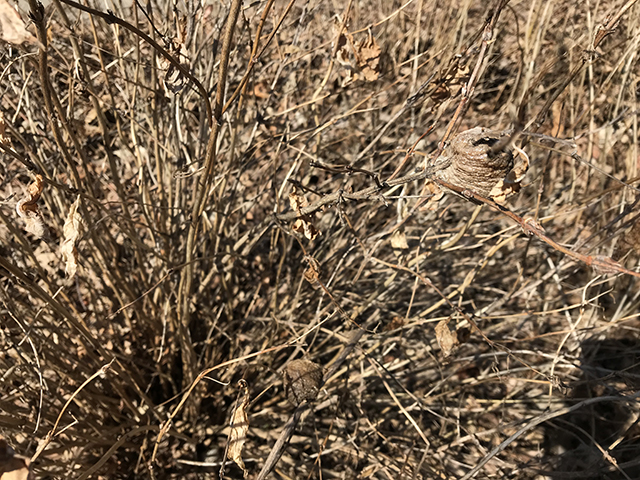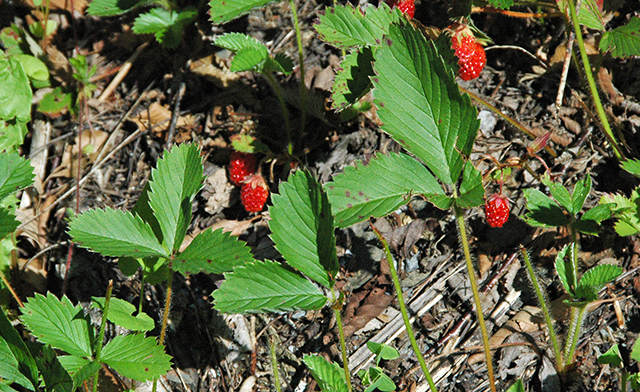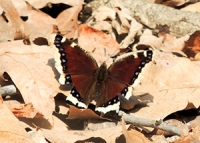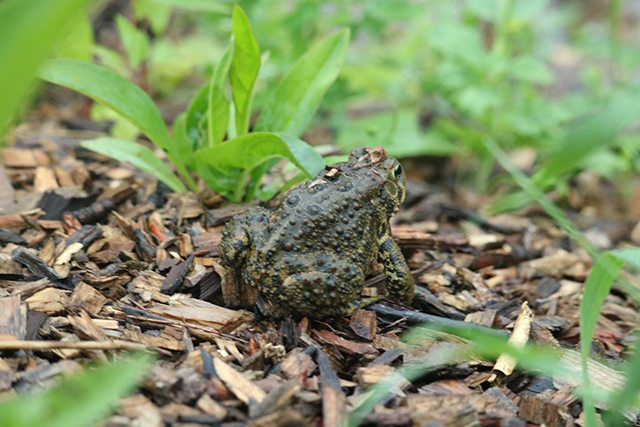To avoid disturbing wildlife, when should I remove leaves and dead stems from my flower beds?
After it has been 50°F for several days.This is when insects awake from a winter slumber among the leaves and stems. If you must remove leaves and dead stalks before then, pile them in an undisturbed area of garden. If you are patient you will see butterflies, moths, and other tiny insects emerge. These insects are a primary food source for birds in the spring.
What insects might I find on last season's stems in spring?
Last season's stems in your garden may have cocoons or eggs containing:
- Mourning cloak (Nymphalis antiopa), pictured above
- Question mark (Polygonia interrogationis)
- Eastern comma (Polygonia comma)
- Mantis (Can you see the mantis egg sack near the upper right corner of the photo below?):

Photo: Michaela Rosenthal, UEC Land Steward
How can I support urban backyard wildlife?
All animals need four elements: food, water, cover and space. First, consider what wildlife species you would like to have in your space. Next, look up their specific needs. How might you add some of these elements to your garden? Here are a couple ideas to spark your imagination:
- Water: Add a birdbath or small pond
- Food: Native plants attract beneficial insects and birds
- Cover: Move brush into a pile for birds and small mammals
- Space: Some open areas in your garden can be welcome areas for wildlife to roam
Wildlife are damaging my garden, what can I do?
This can be very frustrating! If you have trouble with wildlife foraging your garden plants and vegetables, we suggest creating a fence or using netting to discourage wildlife from getting a tasty snack. You could try keeping them away with specifically designed tape or fake birds. If these things aren't working, you may just have to choose different plants for your garden.
Which native plants are delicious & nutritious for people and wildlife?
- Gooseberry (Ribes oxyacanthoides): Gooseberries are a delicious seedy snack
- Serviceberry (Amelanchier species): Yum ... serviceberries!
- Wild Strawberry (Fragaria virginiana): Even sweeter than store-bought strawberries

Fragaria virginiana blooms in April - June and attracts butterflies
Speaking of native plants, why are they important to wildlife and where can I get them?
Native plants are essential to improve native pollinator habitat since they are the plants our pollinators have evolved to metabolize.
Click here to check out the WI-DNR’s list for native plant nurseries.
Happy spring gardening!
We hope this is helpful insight while you're preparing your garden this spring! Do any other questions come to mind? We'd love to hear them in the comments!






